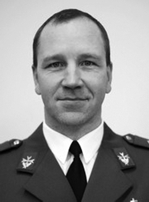Military Institution in a Small Country – Estonia’s Choices in 1991–1994
The article examines the choices that influenced the emergence of the military institution of Estonia.
After becoming free of the Soviet occupation in 1991, Estonia started to organise its national defence by following the example of other countries. Using the defence conceptions of Finland and other Nordic Countries as an example has been mentioned most often. Before 1991, several military organisations that competed with one another were active in Estonia. In 1988 the pre-war military organisation National Defence League (Kaitseliit) had been restored by way of civil initiative; it was officially recognised only after the restoration of independence. The main reason for this was the polarisation of the society at that time, when the nationalist-minded representative assemblies and the National Defence League that supported them were against cooperation with the authorities of the Soviet period. The organisation Kodukaitse (Home Defence Guard) that was established in 1990 with the support of the Government was formed to defend internal order but lost its role later because it could not integrate into the new structure of national defence.
After the military coup in Moscow in 1991, when Estonia restored its independence, Estonian officer Ants Laaneots, who had served in the Soviet Army, was called to build up the Defence Forces of Estonia. At first his defence visions were criticised because of their grand scale, but later observations have shown that thanks to his knowledge of history and perception of threats, the Defence Forces of Estonia were re-established as the new version of pre-war structures.
When looking at Estonia’s becoming independent and restoring its independence in the 20thcentury, it can be noted that both processes have similar patterns. The impact the history has had on the re-establishing of institutions could be a subject for another research, for example, from the perspective of institutional path dependency.
